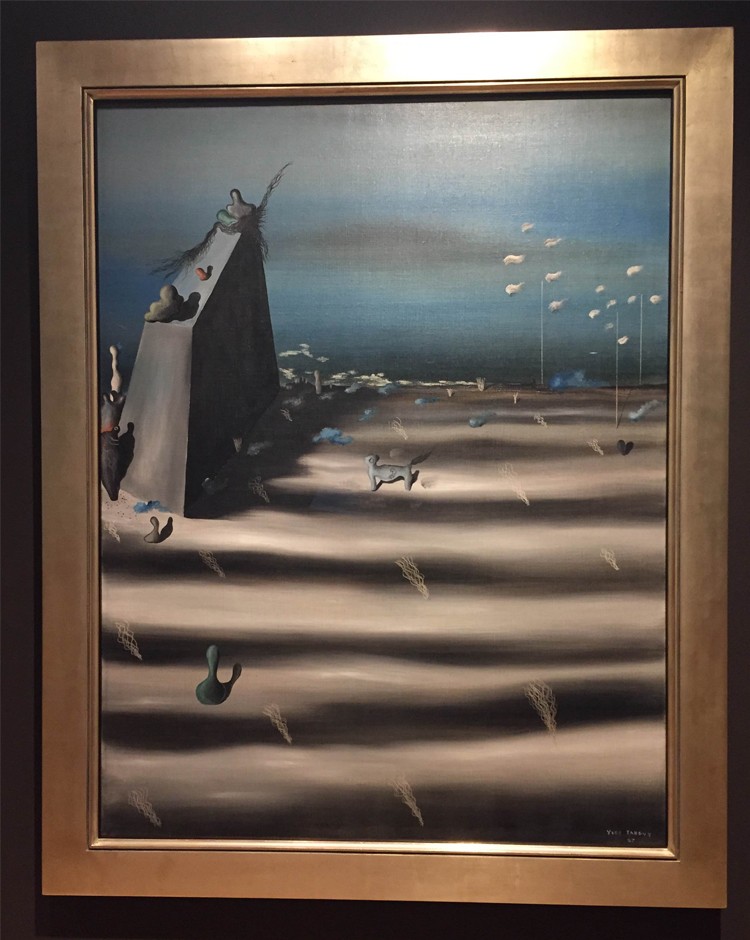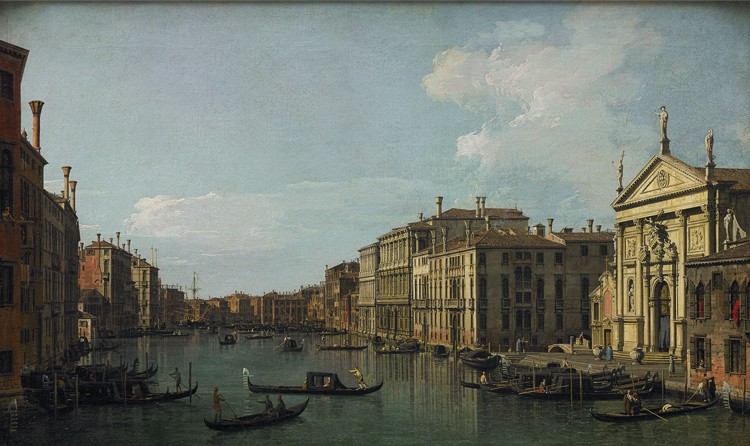
Yves Tanguy, A Large Picture That Represents a Landscape, 1927. Oil on canvas, 45 7/8 x 35 3/4 in. Paul G. Allen Family Collection
An inventor of convincingly illusionistic landscapes, Yves Tanguy had no artistic training. His first exhibition included this painting, A Large Picture That Represents a Landscape, and set forth all the surreal elements he would continue to examine in his lifetime.
This scene shows a windswept beach where rippled sands dotted with dune grass stretch toward breaking waves. At left looms a gray monolith, evocative of menhirs—huge, upright stones of ancient origin and uncertain use. Clustered on and around it are faceless, quasi-humanoid figures. Fishy shapes swim among the slender poles, plunging the viewer into an imagined submarine realm.
Nearby more realistic depictions of landscapes in Seeing Nature, this work makes for interesting conversation. Look closely at Tanguy’s painting—what jumps out at you first?




